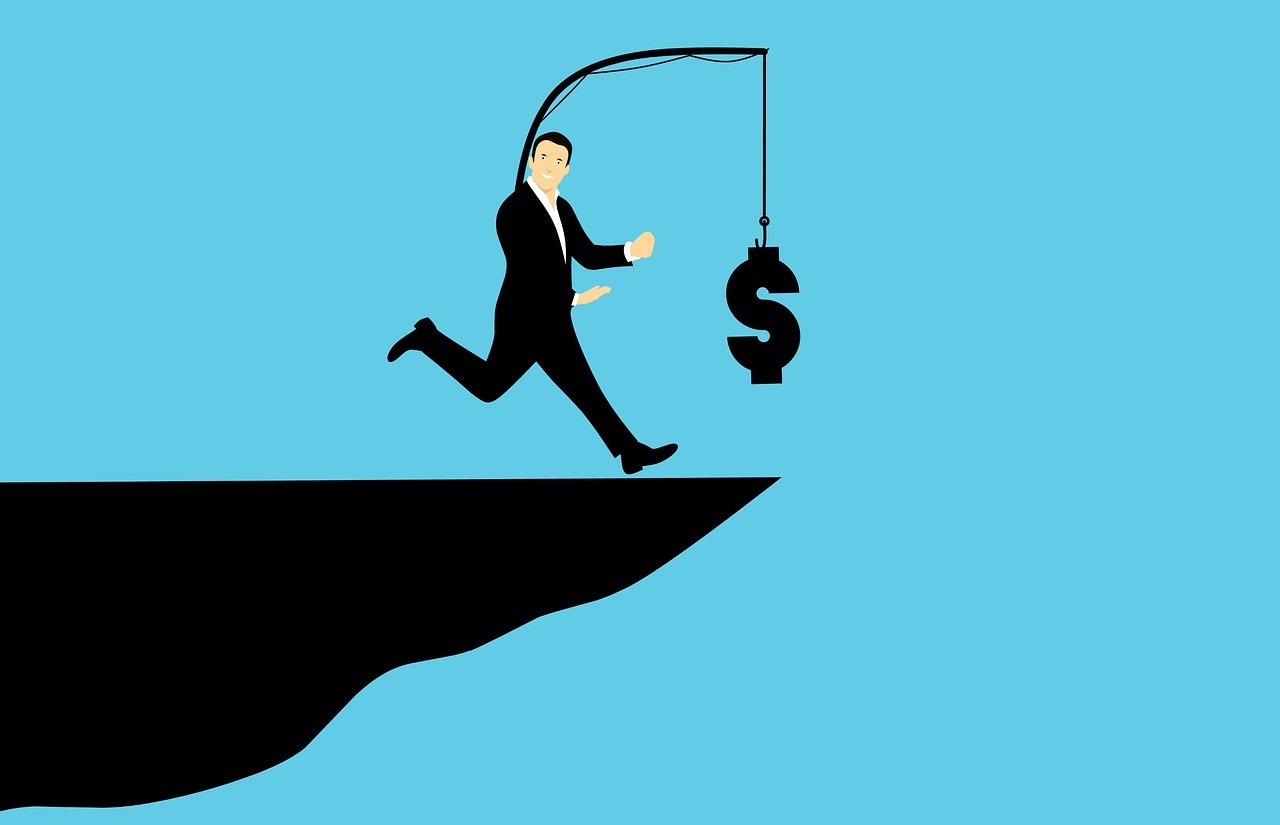

Financial crises are surprisingly regular and often come with much worse economic downturns than normal recessions. 1870 to 2015 saw over 200 peacetime recessions, a quarter of which are classified as financial crises. Furthermore, on average, real GDP per capita was 5-6% lower six years after these crises, compared with 4% lower over a normal business cycle.
Because financial crises happen so often and hit growth so hard, they attract more research than other disasters like wars or pandemics. This motivated the authors of a new NBER working paper to survey the literature, summarising how it measures financial crises, whether they are predictable, and why they are associated with economic contractions. They find:
Financial crises have negative and substantial economic consequences and are predictable 1-5 years beforehand.
The losses from financial crises come from pre-crisis imbalances and the crisis itself.
There are good and bad forms of debt-fuelled financial crises, with household-driven credit booms typically causing more severe recessions than firm-driven ones.
This article is only available to Macro Hive subscribers. Sign-up to receive world-class macro analysis with a daily curated newsletter, podcast, original content from award-winning researchers, cross market strategy, equity insights, trade ideas, crypto flow frameworks, academic paper summaries, explanation and analysis of market-moving events, community investor chat room, and more.
Summary
- A new NBER working paper reviews the extensive literature on the measures, predictability and consequences of financial crises.
- It finds financial crises are predictable, non-random events forecastable 1-5 years ahead.
- The key variables to watch are the debt-to-service ratio, credit market sentiment measures, asset price inflation and household credit growth.
Introduction
Financial crises are surprisingly regular and often come with much worse economic downturns than normal recessions. 1870 to 2015 saw over 200 peacetime recessions, a quarter of which are classified as financial crises. Furthermore, on average, real GDP per capita was 5-6% lower six years after these crises, compared with 4% lower over a normal business cycle.
Because financial crises happen so often and hit growth so hard, they attract more research than other disasters like wars or pandemics. This motivated the authors of a new NBER working paper to survey the literature, summarising how it measures financial crises, whether they are predictable, and why they are associated with economic contractions. They find:
- Financial crises have negative and substantial economic consequences and are predictable 1-5 years beforehand.
- The losses from financial crises come from pre-crisis imbalances and the crisis itself.
- There are good and bad forms of debt-fuelled financial crises, with household-driven credit booms typically causing more severe recessions than firm-driven ones.
What Is a Financial Crisis?
By far the most common classification method of financial crises is a mix of narrative and quantitative, focusing on events characterised by large-scale macro distress in the banking system. These include the closure or suspension of a large fraction of the system and/or the need for substantial government interventions to protect the system from acute failure.
Consequently, the authors define a financial crisis as a crisis occurring in the banking sector, effectively rendering a financial crisis and banking crisis equivalent. This matches the most common definition in the literature, provided by Laevan and Valencia (2008). This also means stock market crashes, manias and bubbles in commodity or asset prices, default and debt crises, and currency or exchange rate crises are distinct from financial crises.
What Are the Main Datasets on Financial Crises?
Using Laeven and Valencia’s criteria, three datasets identify a panel of financial crises for advanced economies from 1870 to recent times. All three generally strongly agree a significant period of global distress occurred in 1929-33 and that hardly any financial crises happened in 1939-1973. These datasets are:
- Bordo, Eichengreen, Klingebiel, and Martinez-Peria (BEKM), who look at the period 1880-1997 and count 69 financial crises.
- Reinhart and Rogoff (RR), whose sample runs from 1870 to 2010 and identifies 102 financial crises.
- Jorda, Schularick, and Taylor (JST), who cover the years 1870-2016 and record 90 financial crises.
Three datasets also provide a short panel of financial crises for both advanced and emerging economies from 1970 onwards. Two are covered above – BEKM and RR – which include emerging economies from 1973 and 1970 onwards, respectively. The third is Laeven and Valencia (LV), whose dataset runs from 1970 to 2017. In total, LV counts 151 EM and DM financial crises during this period, while BEKM counts 62 and RR 120.
These datasets classify financial crises as binary 0-1 variables, where ‘1’ represents the starting year of a crisis. The datasets only allow authors to study the average effects of financial crises. In reality, crises vary in intensity, and so Romer and Romer (2017) and Baron, Verner, and Xiong (2021) classify events by the severity of the financial crisis. These types of studies generally find more intense episodes align with more adverse outcomes, while milder episodes may not be associated with significant drag.
The Characteristics of a Financial Crisis
Distinct trends surround financial crises, as shown in JST’s panel from 1870-2016 (Chart 1). Typically, house prices, bank loan/deposit ratios, credit-to-GDP and stock prices rise ahead of crises, and by more than before normal recessions (blue). When a crisis hits, real GDP per capita falls sharply and is associated with the onset of a disinflationary period and credit crunch.
Interestingly, financial crises are also characterised by larger run-ups in bank equities pre-crisis, wider credit spreads post-crisis, and significant reversals in asset prices when crises hit. Furthermore, the literature finds rising bank profits is a leading indicator of financial crises, and it tends to come from a decline in loan loss provisions.
Financial Crisis Predictability and Causality
According to the authors, the literature survey reveals overwhelming empirical evidence that financial crises are predictable, non-random events. Private credit, measured either using private credit growth or the change in the private credit to GDP ratio, emerges as a central factor in financial crisis prediction.
Credit booms that predict financial crises are themselves also predictable. Former Fed Chair Ben Bernanke showed that global changes in savings can lead to large accumulations of deployable financial capital that can drive credit booms. Similarly, higher income inequality increases the proportion of borrowers in an economy, thereby raising household and government debt.
Monetary policy also helps predict bursts of credit expansion, as lower interest rates encourage banks to expand credit supply and/or take more risk. This then fuels a rise in lending against real estate and growth in house prices – conditions which themselves heighten the risks of financial crises.
Measures of heightened credit market sentiment can also predict a reversal in credit market conditions and subsequently lower real GDP growth. Such measures include the spreads between high yield and investment grade corporations, together with high issuance by low credit quality firms relative to high credit quality ones.
Behavioural patterns can also help predict credit booms. Richter and Zimmermann (2019) find that the sudden rise in bank profits is the origin of bank credit expansions. This rise is associated with a decline in loan provisions, which is consistent with the idea that bank managers become overly optimistic before financial crises. While this may seem irresponsible, other research shows bank managers are often unaware risks are rising pre-crisis.
Beyond credit, asset price inflation often precedes crises. Additionally, for small open economies, inflation, the terms of trade (TOT) and the real exchange rate (RER) follow typical patterns before financial crises. That is, the RER appreciates and TOT improve, but then the crisis prompts a rapid deterioration in both.
Overall, the literature agrees that financial crises are predictable 3-5 years before. For shorter horizons, a seminal paper by Drehmann and Juselius (2014) finds that the debt to service ratio (DSR) – the interest and principal payments made by borrowers scaled by disposable personal income – has strong early warning properties within two years of a crisis. In the last four quarters before a crisis, the DSR is a near-perfect indicator.
Lastly, a new strand of literature has focused on predicting banking crises within a year using high-frequency indicators. Generally, it finds deteriorating financial conditions are strong predictors of the lower quantiles of the economic growth distribution. A previous Deep Dive explains which financial factors the literature has identified as key to determining tail risks to growth.
How Do Financial Crises Lead to Recessions?
On average, financial crises are much worse for growth than typical ones (Chart 1, b). But are the consequences due to pre-crisis imbalances or the crisis itself? As is common in economics, the answer in the literature is a mixture of both.
The paper by Jorda, Schularick, and Taylor (2013) is perhaps best known. They analyse recessions between 1870 and 2008 to explore why some are more severe than others. Overall, financial recessions reduce GDP by an average of 3.1% and last four years. Nonfinancial recessions have a -2% impact and last only 1-2 years.
A key result, however, was that both are significantly worse if preceded by a large rise in credit, especially when sparked by housing price bubbles. Chart 2 captures the relationship between household debt and GDP contractions. For example, a rise in the household debt to GDP ratio from four years ago to last year predicts a substantial decline in subsequent real GDP growth from the current year onward, even with financial controls. The post-financial crisis recession is also significantly worse if bank equities crash by more than 30%.
Not All Debt Is Bad Debt
The literature almost unanimously agrees rising private debt to GDP predicts a financial crisis with lower subsequent growth. But not all debt increases are bad. Good credit booms are those that increase the economy’s productive capacity, rather than boost demand for financial consumption.
Bad credit booms are where rising debt boosts local demand, such as mortgage debt, debt issued to households, and debt raised by firms producing non-tradable goods. Non-mortgage credit booms, for example, ones driven by businesses rather than households, are generally found to have no noticeable drag on GDP growth.
A novel way of determining whether demand or supply is driving a recession is to look at trade data, as Benguria and Taylor (2020) did. Recessions preceded by run-ups in household debt hurt imports more heavily post-crisis, while those driven by firms affect exports. Indeed, they find past financial crises are much more likely to be associated with import compressions.
Bottom Line
The literature on financial crises is extensive, and the authors offer a high-level overview of its findings on their measures, predictability and consequences. The paper is a good guide for those looking to gain early insights into potential future downturns and identifies four important datasets from which to build your analysis. It also explains why not all credit-fuelled financial crises will have lasting economic consequences.
Citation
Sufi, A., Taylor A. M., (2021), Financial crises: A survey, NBER, https://www.nber.org/papers/w29155
Sam van de Schootbrugge is a Macro Research Analyst at Macro Hive, currently completing his PhD in international finance. He has a master’s degree in economic research from the University of Cambridge and has worked in research roles for over 3 years in both the public and private sector.
